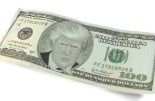Payden & Rygel: US economic surprise index vs 30-day change in 10-year treasury yields
Payden & Rygel: US economic surprise index vs 30-day change in 10-year treasury yields

In early August, investors interpreted softer summer jobs reports as a sure-fire sign the economy was rolling over. Some investors even touted the need for an 'inter-meeting' emergency rate cut to stave off the inevitable downturn.
In response to labor market concerns, the Federal Reserve cut the policy rate by 50 basis points in September. But now, interest rates are ... higher? The benchmark 10-year U.S. Treasury yield touched a near-term low of 3.65% in mid-September before topping 4.20% this week. What's changed?
Economically data positively surprised forecasters on employment and income growth, pointing to continued economic growth. Perhaps it's no surprise then that 10-year yields are higher, as they tend to follow the ebbs and flows of the economic data.
Two questions remain. First should investors prepare to be surprised to the upside, or are bonds more reasonably valued than during the summer growth scare? We find ourselves in the latter camp. Second, do higher yields portend danger for risk assets? Not necessarily. Bond yields rising in response to more robust growth bodes well for stocks and credit.










